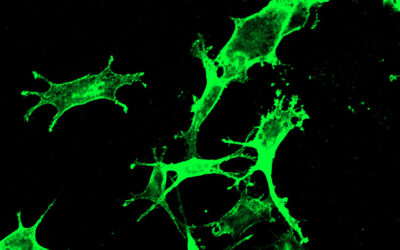
Potential application for a copolymer network comprising reversible shape shifts caused by temperature variations between body and room temperature. Copyright Lendlein et al.
Repeated temperature variations between room and body temperature cause reversible shape shifts in an elastic polymer, suggesting great potential in assistive home-care equipment for elderly people or in minimally-invasive surgery.
The challenge in the design for this material was to equip the polymer with components determining the geometry of the shape shift and at the same time to integrate actuator elements, which enable the reversible movement. For this purpose, Andreas Lendlein and co-workers (Helmholtz-Zentrum Geesthacht, Teltow, Germany) now incorporated two types of chain segments into the network architecture.
The fundamental principle, how the copolymer network remembers the geometry of the shape shifts, is of particular interest: The material`s shape changes are caused by the temperature dependent organization of the crystallizable segments in actuator domains. The molecular orientation within these domains is maintained also in the molten state. In this way, the geometry of the reversible movement is defined.
Potential applications are, for example, reversible closure systems for shoes or clothes. Both products belong to the field of gerontechnology, an interdisciplinary research area, addressing the medical needs of elderly people. Another potential application area are reversibly folding guide wires for e.g. nerve electrodes in the field of minimally-invasive surgery.

















